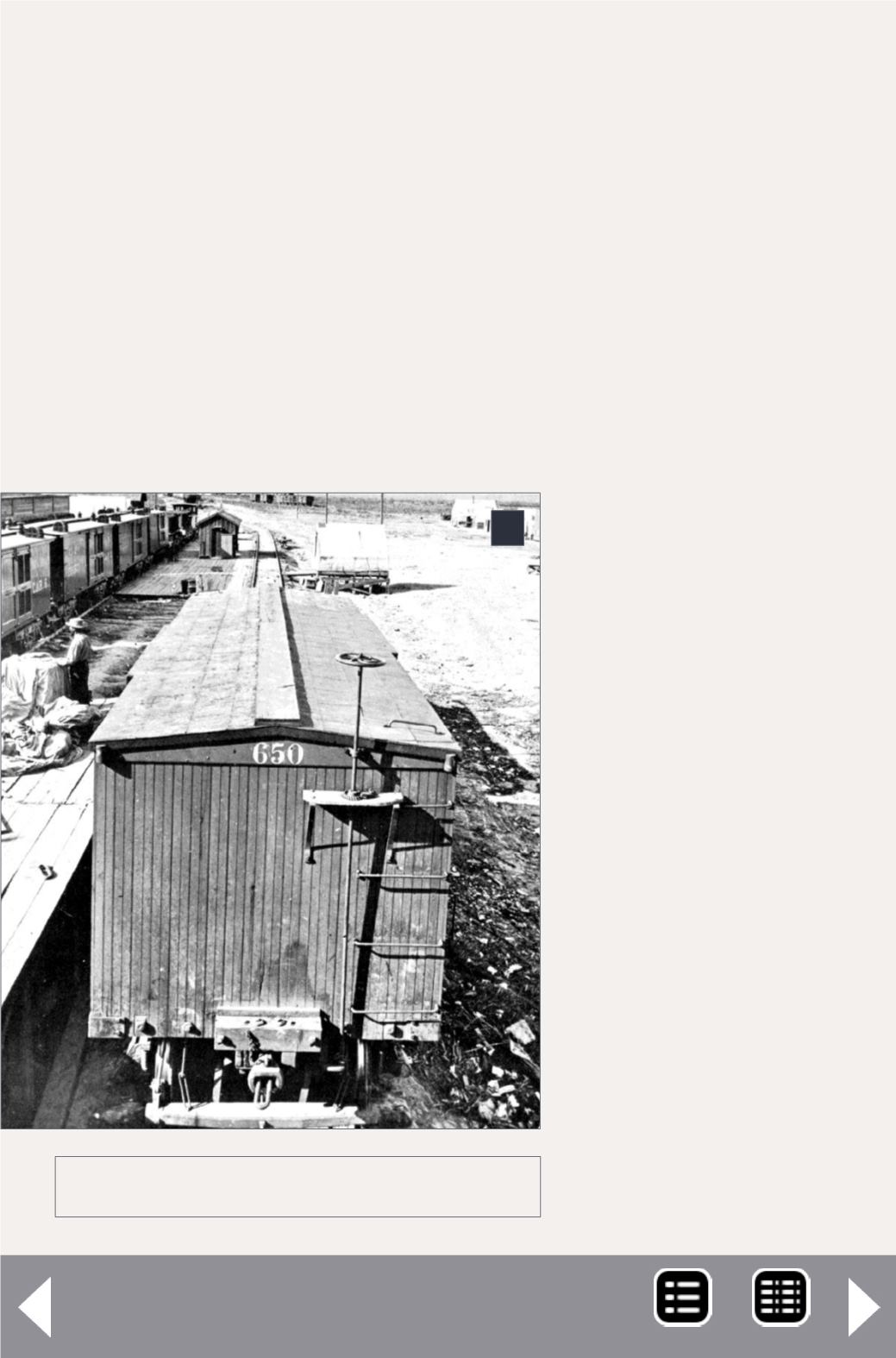
whose catalog listed malleable iron wheels in a variety of patterns
with a choice of either five or six spiral spokes (3). Advertisements
for DaytonManufacturing Company’s “Perfect” wheel claimed the
stepped rim provided a better grip for trainman (4). It could also rip
his hands if the wheel suddenly began to spin when released.
Geared hand-brakes
After the introduction of air brakes, trainmen no longer had
to stop or slow a train by jumping from car to car tightening
the brakes. However, in yards or setouts on sidings, brakes still
needed to be set (or released) on individual cars. The develop-
ment of geared hand-
brake mechanisms
in the early 1920s,
and the mechani-
cal advantage they
offered, greatly
improved the function
of hand brakes and
provided improved
safety for trainmen.
The geared mecha-
nism was contained
in a housing riveted
to the car end and
incorporated a verti-
cally mounted wheel,
usually 22 inches
in diameter. Until
standardization was
initiated in the mid-
1950s, a wide range
Freight car hand brakes - 2
2. Vertical “stem-winder” hand brake
from 1869.
2
MRH-Feb 2013


